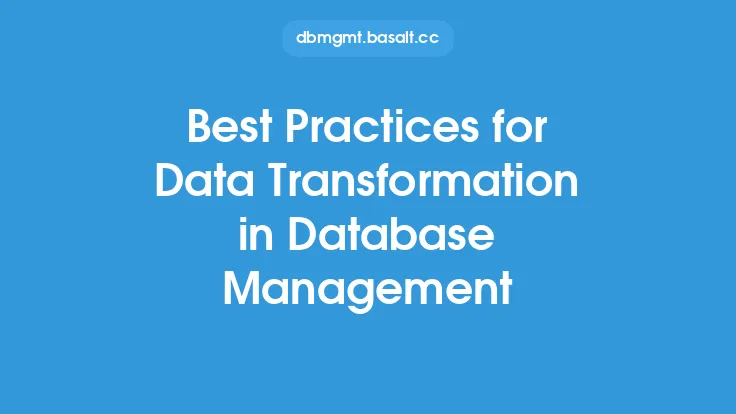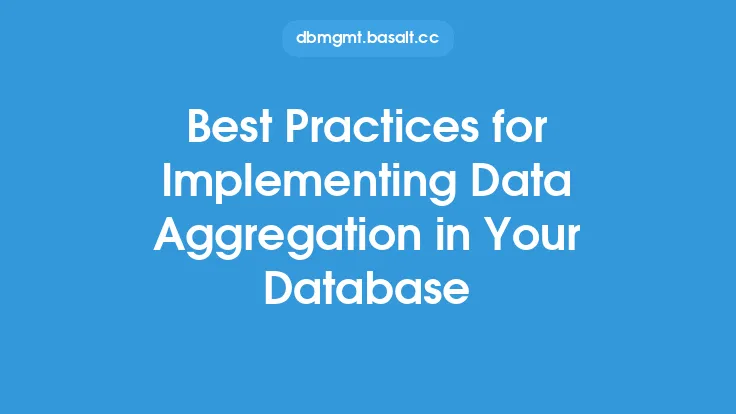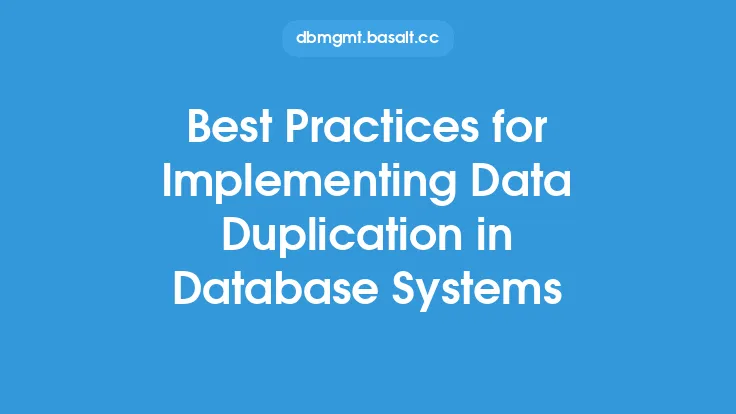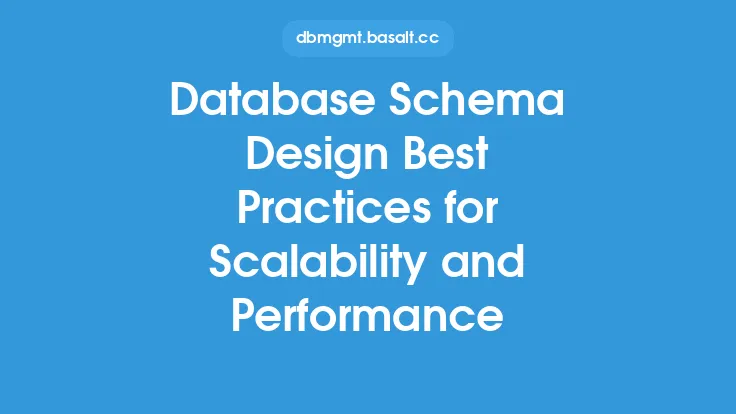When designing a database, one of the key considerations is how to structure the data to ensure it is organized, efficient, and scalable. Data normalization is a crucial step in this process, and within normalization, data disaggregation plays a vital role. Data disaggregation refers to the process of breaking down complex data sets into smaller, more granular components to improve data integrity, reduce data redundancy, and enhance data flexibility. In this article, we will delve into the best practices for data disaggregation in database design, providing a comprehensive guide for database administrators, developers, and data architects.
Introduction to Data Disaggregation
Data disaggregation is an essential technique in data normalization, which involves decomposing complex data entities into smaller, more manageable pieces. This process helps to eliminate data redundancy, improve data consistency, and reduce data anomalies. By breaking down complex data sets, data disaggregation enables database designers to create more efficient, scalable, and maintainable databases. In addition, data disaggregation facilitates better data analysis, reporting, and decision-making by providing more detailed and accurate data.
Benefits of Data Disaggregation
The benefits of data disaggregation are numerous and significant. Some of the key advantages include:
- Improved data integrity: By breaking down complex data sets, data disaggregation helps to eliminate data redundancy and inconsistencies, resulting in more accurate and reliable data.
- Enhanced data flexibility: Data disaggregation enables database designers to create more flexible databases that can adapt to changing business requirements and data needs.
- Reduced data anomalies: Data disaggregation helps to reduce data anomalies by identifying and eliminating data inconsistencies and errors.
- Better data analysis and reporting: Data disaggregation provides more detailed and accurate data, enabling better data analysis, reporting, and decision-making.
- Improved data scalability: Data disaggregation enables databases to scale more efficiently, as smaller, more granular data components can be more easily managed and maintained.
Best Practices for Data Disaggregation
To ensure effective data disaggregation, database designers should follow several best practices:
- Identify complex data entities: The first step in data disaggregation is to identify complex data entities that can be broken down into smaller components.
- Analyze data relationships: Database designers should analyze the relationships between data entities to determine how they can be decomposed into smaller, more granular components.
- Use normalization techniques: Data normalization techniques, such as first normal form (1NF), second normal form (2NF), and third normal form (3NF), can be used to guide the data disaggregation process.
- Eliminate data redundancy: Data redundancy should be eliminated by ensuring that each data component is stored in one place and one place only.
- Use data modeling techniques: Data modeling techniques, such as entity-relationship modeling (ERM) and dimensional modeling, can be used to create a conceptual representation of the data and guide the data disaggregation process.
Data Disaggregation Techniques
Several data disaggregation techniques can be used to break down complex data sets, including:
- Vertical partitioning: Vertical partitioning involves breaking down large tables into smaller, more manageable pieces based on columns or attributes.
- Horizontal partitioning: Horizontal partitioning involves breaking down large tables into smaller, more manageable pieces based on rows or records.
- Data warehousing: Data warehousing involves creating a separate database or repository to store data in a more granular and detailed form.
- Data marting: Data marting involves creating a smaller, more focused database or repository to store data in a more granular and detailed form.
Challenges and Considerations
While data disaggregation offers numerous benefits, it also presents several challenges and considerations, including:
- Data complexity: Data disaggregation can increase data complexity, making it more difficult to manage and maintain.
- Data consistency: Data disaggregation can create data consistency issues, particularly if data is not properly synchronized across different components.
- Data security: Data disaggregation can create data security issues, particularly if sensitive data is not properly protected.
- Data performance: Data disaggregation can impact data performance, particularly if data is not properly optimized and indexed.
Tools and Technologies
Several tools and technologies can be used to support data disaggregation, including:
- Database management systems (DBMS): DBMS, such as Oracle, Microsoft SQL Server, and IBM DB2, provide features and functions to support data disaggregation.
- Data modeling tools: Data modeling tools, such as Entity-Relationship Modeling (ERM) and dimensional modeling, can be used to create a conceptual representation of the data and guide the data disaggregation process.
- Data warehousing tools: Data warehousing tools, such as Amazon Redshift and Google BigQuery, can be used to create a separate database or repository to store data in a more granular and detailed form.
- Data integration tools: Data integration tools, such as ETL (Extract, Transform, Load) and ELT (Extract, Load, Transform), can be used to integrate data from different sources and create a unified view of the data.
Conclusion
Data disaggregation is a critical component of data normalization, and when done correctly, it can have a significant impact on the efficiency, scalability, and maintainability of a database. By following best practices, using data disaggregation techniques, and leveraging tools and technologies, database designers can create more efficient, scalable, and maintainable databases that support better data analysis, reporting, and decision-making. As data continues to grow in complexity and volume, the importance of data disaggregation will only continue to increase, making it an essential skill for database administrators, developers, and data architects.





